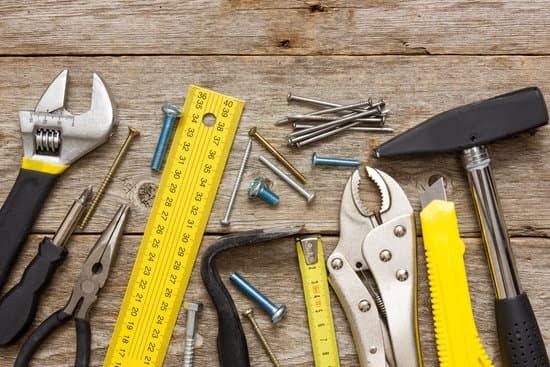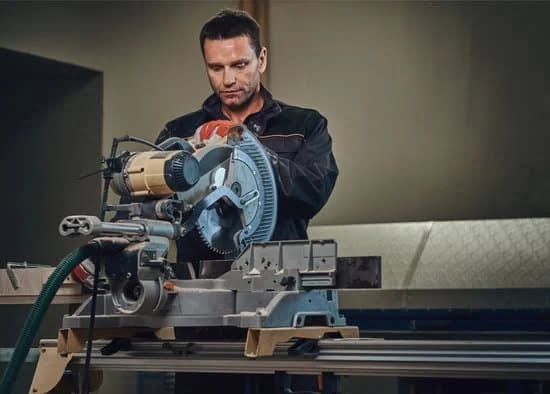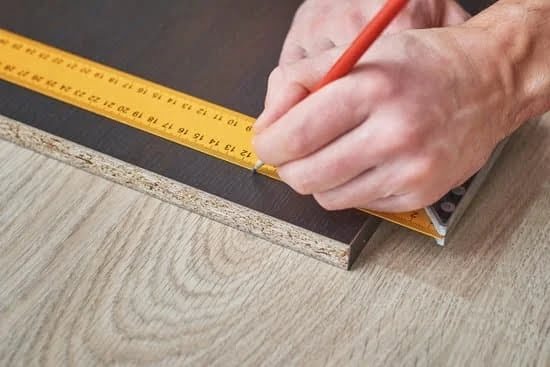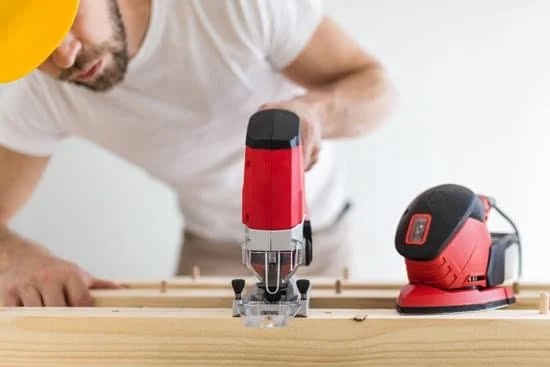Woodworking is a timeless craft that allows individuals to create functional and beautiful items using their creativity and skills. Whether you are looking for a new hobby or considering woodworking as a profession, it is essential to have the right tools to get started. In this article, we will explore the wide range of tools necessary for woodworking enthusiasts, from basic hand tools to power tools and safety equipment.
There is something truly special about working with wood. The process of transforming raw materials into finished pieces can be incredibly satisfying, bringing out your creativity and providing a sense of accomplishment. Woodworking also offers a unique way to relieve stress and find solace in the workshop.
However, having the right tools is crucial for success in this craft. Without proper tools at your disposal, your woodworking projects may become frustrating instead of fulfilling. In this article, we will guide you through the must-have tools that every beginner should consider acquiring. From workbenches to chisels, saws to sanders, we will cover all essential hand and power tools necessary for your woodworking journey.
So whether you are dreaming of crafting furniture or small wooden trinkets, it’s time to equip yourself with the right set of tools. Join us as we delve into the world of woodworking and discover how these essential instruments can help bring your creative visions to life.
Benefits of woodworking
Woodworking is not just a hobby or profession; it offers a wide range of benefits that can positively impact your overall well-being. Engaging in woodworking can be a great way to relieve stress and promote mental health. The process of creating something with your own hands, from conceptualizing a design to bringing it to life, can be incredibly therapeutic and fulfilling.
One of the key benefits of woodworking is the opportunity for creativity. Woodworking allows you to express your artistic side and explore your imagination. Whether you’re crafting intricate carvings or building a piece of furniture, woodworking provides endless possibilities for creativity and self-expression.
Another advantage of woodworking is the ability to craft functional and beautiful items. With the right tools and skills, you can create custom furniture that perfectly fits your space, build unique storage solutions, or even make personalized gifts for loved ones. There’s nothing quite like using handmade wooden items that have been specifically designed to meet your needs.
To fully enjoy these benefits, it is important to have the right tools for woodworking. A high-quality workbench provides a stable surface for all your projects, while hand tools like chisels, hand saws, and mallets are essential for precise cutting and shaping. Power tools such as circular saws, drills/drivers, and random orbital sanders make tasks faster and more efficient. Safety equipment like safety goggles, dust masks, and ear protection ensures your well-being while working on projects.
| Benefit | Description |
|---|---|
| Stress Relief | The process of woodworking can be therapeutic and relieve stress. |
| Creativity | Woodworking allows for artistic expression and exploration of imagination. |
| Functional and Beautiful Items | Woodworking enables the creation of custom furniture and personalized gifts. |
Essential tools for beginners
When starting out in woodworking, it is essential to have the right tools to ensure your projects are successful and enjoyable. This section will introduce the must-have tools that every beginner woodworker should consider.
High-Quality Workbench
A workbench is the foundation of any woodworking shop. It provides a sturdy and flat surface for you to work on, allowing you to securely hold your workpieces while you perform various tasks. Look for a workbench that is made from solid and durable materials like hardwood or plywood, with a sufficient size and weight to handle your projects.
Hand Tools
Investing in a range of high-quality hand tools is crucial for any woodworker. Chisels are essential for shaping and carving wood, while a good hand saw allows you to make accurate cuts. A mallet is handy for tapping chisels or driving joints together. Additionally, you may want to consider getting other hand tools like clamps, a coping saw, a block plane, and measuring tools such as a combination square and tape measure.
Power Tools
Power tools can significantly speed up your woodworking projects and improve their accuracy. A circular saw is versatile enough to handle many cutting tasks, while a drill/driver allows you to drill holes and drive screws efficiently. A random orbital sander helps in achieving smooth finishes on your workpieces. As you progress in your woodworking journey, you may also consider adding other power tools like a jigsaw, router, or table saw to expand your capabilities.
Safety Equipment
Woodworking involves working with sharp tools and potentially harmful materials such as dust and noise. Therefore, it is essential to prioritize safety by wearing proper protective equipment. Safety goggles protect your eyes from flying debris, dust masks help filter out harmful particles when sanding or cutting wood, and ear protection guards against loud noise produced by power tools. Always prioritize safety to ensure a safe and enjoyable woodworking experience.
By having a high-quality workbench, a range of hand tools, essential power tools, and the necessary safety equipment, beginning woodworkers will have a solid foundation to embark on their woodworking journey. These tools will enable you to tackle various projects and develop your skills as you progress.
Choosing the right wood
Woodworking is a craft that involves working with different types of wood to create beautiful and functional items. One of the key aspects of woodworking is choosing the right wood for each project. In this section, we will discuss the different types of wood available, their characteristics, and their suitability for various woodworking projects.
There are various factors to consider when selecting wood for woodworking projects, including the type of project, desired aesthetics, and budget. Each type of wood has its own unique characteristics that can greatly impact the final result of a project. Some common types of wood used in woodworking include hardwoods such as oak, maple, and cherry, as well as softwoods like pine and cedar.
Hardwoods are known for their durability and strength, making them suitable for furniture making and other projects that require sturdy materials. They also tend to have more interesting grain patterns and can be stained or finished in various ways to enhance their natural beauty. Softwoods, on the other hand, are often used for construction projects or items that require lightweight materials.
When it comes to beginners in woodworking, it is important to select appropriate wood that is easy to work with and forgiving of mistakes. Some recommended woods for beginners include pine and poplar due to their affordability, availability, and ease of use. These woods are softer and easier to shape with hand tools or power tools.
| Type of Wood | Characteristics | Suitability |
|---|---|---|
| Hardwoods (e.g., oak, maple, cherry) | Durable and strong, interesting grain patterns | Furniture making, projects requiring sturdiness |
| Softwoods (e.g., pine, cedar) | Lightweight, often used in construction | Construction projects, lightweight items |
| Pine and poplar | Affordable, easy to work with | Beginner woodworking projects |
Tool maintenance and sharpening
Why Tool Maintenance and Sharpening are Important
Regular maintenance and sharpening of woodworking tools are essential for ensuring their optimal performance and longevity. Over time, tools can become dull, rusty, or damaged, which can affect the quality of your work and make your tasks more difficult. By properly maintaining and sharpening your tools, you can not only maintain their effectiveness but also save money in the long run by avoiding unnecessary replacements.
Tips for Proper Tool Maintenance
To keep your woodworking tools in top condition, consider following these tips:
- Clean regularly: After each use, take the time to clean off any debris or sawdust that may have accumulated on your tools. Use a brush or cloth to remove dirt and apply a light coat of oil to prevent rusting.
- Store properly: As important as cleaning is proper storage of your tools. Use a designated tool chest or rack to keep them organized and protected from moisture and dust.
- Lubricate moving parts: Moving parts like hinges, joints, and screws should be lubricated occasionally with a suitable lubricant to ensure smooth operation.
- Check for damage: Regularly inspect your tools for any signs of damage such as cracks or chips. If you notice any issues, address them promptly by repairing or replacing the affected parts.
Sharpening Techniques
Sharpening woodworking tools can seem daunting at first but with practice, it becomes an essential skill every woodworker should master. Here are some key techniques for sharpening common woodworking tools:
- Chisels: Start by securing the chisel in a honing guide to maintain a consistent angle while sharpening it against a fine-grit whetstone. Move the chisel back and forth over the stone using even pressure until you achieve a sharp edge.
- Hand planes: Place the plane blade in a honing guide to establish the correct bevel angle. Then, use a combination of coarse and fine sharpening stones to remove any nicks or dullness and achieve a razor-sharp edge.
- Saws: For hand saws, use a triangular file to sharpen each tooth individually. Maintain the proper angle by referencing the saw’s existing teeth. Power tools like circular saw blades can be sharpened using specialized attachments for grinders.
Remember, practice makes perfect when it comes to tool maintenance and sharpening. Start with caution, take your time, and follow proper techniques to ensure your tools are well-maintained and ready for any woodworking project.
Setting up a woodworking space
Setting up a woodworking space is crucial for anyone interested in pursuing woodworking as a hobby or profession. A well-organized and properly equipped space can enhance efficiency, safety, and creativity. When setting up a woodworking space, there are several important considerations to keep in mind.
- Space: The first consideration is the available space. Whether you have a small corner of a room or an entire garage, it’s important to make the most of the area you have. Utilize vertical storage options such as shelving and pegboards to maximize floor space. Consider the size of your projects when determining how much space you need for your workbench and tools.
- Ventilation: Woodworking produces dust and fumes that can be harmful if inhaled. It’s important to have proper ventilation in your woodworking space to ensure clean air and prevent respiratory issues. If possible, have windows that can be opened for fresh air circulation or consider installing an exhaust fan.
- Lighting: Good lighting is essential for accurate measurements and precision work in woodworking. Natural light is ideal but not always accessible, so consider adding task lighting fixtures above your workbench and general overhead lighting for the entire workspace.
- Organization: A well-organized woodworking space saves time and frustration when searching for tools or materials needed for a project. Consider using a combination of tool chests, wall-mounted racks, and labeled storage bins to keep everything organized and easily accessible.
Regardless of your budget or available space, there are ways to set up a functional and safe woodworking space:
- On a tight budget: Start with the basics – invest in a sturdy workbench, hand tools essential for beginners (such as chisels and hand saws), adequate lighting fixtures like clamp-on lights or LED shop lights, and prioritize cleanliness by regularly sweeping away sawdust.
- Moderate budget: In addition to the basic essentials mentioned earlier, consider investing in power tools like a circular saw and drill/driver. You can also install a dust collection system or use a shop vacuum with appropriate attachments to reduce airborne dust.
- Generous budget: With a larger budget, you can expand your tool collection to include advanced power tools like table saws, routers, jointers, and planers. Additionally, you can invest in specialized woodworking benches or workstations tailored to your specific needs and projects.
By considering these factors and making thoughtful decisions, woodworkers of all levels can create a functional and safe woodworking space that meets their needs and budget. Remember that the key is to optimize your space for convenience, efficiency, and the enjoyment of woodworking projects.
Additional tools for advanced projects
As beginners in woodworking gain more experience and confidence, they may find themselves wanting to take on more complex projects. This is where additional tools can greatly enhance a woodworker’s capabilities. While the essential tools mentioned earlier are sufficient for basic woodworking tasks, advanced projects often require specialized equipment. Here are some additional tools that can take your woodworking skills to the next level:
- Table Saw: A table saw is a versatile tool that allows you to make precision cuts and rip large boards into smaller pieces. It is especially useful when working with plywood or making crosscuts.
- Router: The router is an essential tool for shaping wood and creating intricate designs. It can be used for decorative edges, joinery, and making dadoes and rabbets.
- Jointer: A jointer is used to flatten and straighten wooden boards. It ensures that the edges are square and smooth, making it easier to create strong, seamless joints.
- Planer: When working with rough-sawn lumber or uneven boards, a planer is invaluable. It helps in achieving consistent thickness across the entire length of the board.
In addition to these power tools, there are various clamps and jigs that can assist woodworkers in tackling more complex projects. Clamps are essential for holding pieces together firmly while glue dries or while making precise cuts. Jigs are specialized fixtures that guide tools like routers or saws to ensure accurate results.
It’s important to note that these advanced tools come with their own safety considerations and techniques. Aspiring woodworkers should familiarize themselves with proper usage and safety precautions before operating them. However, incorporating these additional tools into your woodworking toolkit opens up a whole new world of possibilities and allows you to tackle more advanced projects with confidence.
Safety precautions and woodworking resources
Safety is paramount in woodworking. As you embark on your woodworking journey, it is essential to prioritize your well-being and take necessary precautions to prevent accidents and injuries. Here are some key safety measures to keep in mind:
- Always wear personal protective equipment (PPE): Invest in high-quality safety goggles to protect your eyes from flying debris, dust masks or respirators to guard against harmful sawdust, and ear protection to reduce the risk of hearing damage from loud power tools.
- Use proper technique and posture: Maintain a stable stance while operating power tools, keeping your feet shoulder-width apart for balance. When using hand tools, use a vice or clamp to secure the workpiece and avoid holding it with your hand.
- Keep your work area clean and organized: Cluttered workspaces increase the likelihood of accidents. Clear away scraps, clutter, and excess tools from your work area regularly to provide ample space for movement without tripping or knocking things over.
- Follow tool safety guidelines: Familiarize yourself with the user manuals for all your tools and strictly adhere to their recommended operating procedures. Never bypass any guards or safety features on power tools, as they are designed for your protection.
It’s essential that beginners have access to resources that can guide them through their woodworking journey. Here are some valuable resources:
- Books: There is a wide range of woodworking books available that cover everything from basic techniques to advanced projects. Some popular titles include “The Complete Manual of Woodworking” by Albert Jackson and David Day and “Understanding Wood: A Craftsman’s Guide to Wood Technology” by R.Bruce Hoadley.
- Online tutorials: Websites like YouTube offer an abundance of free video tutorials where experienced woodworkers share their tips, tricks, and project walkthroughs. Channels like Woodworkers Guild of America and The Wood Whisperer provide valuable insights for beginners.
- Local woodworking clubs: Joining a local woodworking club can provide opportunities to connect with other enthusiasts, learn from experienced members, and gain access to shared tools and workshop spaces. These clubs often organize workshops and events where you can further develop your skills.
- Workshops: Attending woodworking workshops can offer hands-on experience under the guidance of professional woodworkers. These workshops cover various topics, including tool usage, joinery techniques, and project-specific skills.
Remember, safety is key in woodworking, so ensure you understand and follow all safety precautions before starting any project. Additionally, explore the wealth of resources available to expand your knowledge and skills as a woodworker. With the right tools and proper safety measures in place, you can embark on a fulfilling and enjoyable woodworking journey.
Conclusion
In conclusion, woodworking offers a wide range of benefits as both a hobby and a profession. From stress relief to the ability to create functional and beautiful items, this craft provides a deep sense of satisfaction and creativity. However, in order to fully enjoy the woodworking experience, it is crucial to have the right tools.
Throughout this article, we explored the essential tools every beginner should consider. From high-quality workbenches to power tools like circular saws and random orbital sanders, each tool plays an important role in creating quality woodwork. In addition, we emphasized the importance of safety equipment such as goggles, dust masks, and ear protection.
Selecting the right wood for your projects is another key aspect of woodworking. Understanding different wood types with their characteristics will ensure that you can choose appropriate materials for your skill level. We also discussed the importance of properly maintaining and sharpening tools for optimal performance and durability.
Setting up an ideal woodworking space requires careful consideration of various factors such as space, ventilation, lighting, and organization. By following our suggestions and considering different budget options, you can create a safe and functional workspace that enhances your woodworking experience.
As you progress on your woodworking journey, additional tools like table saws, routers, jointers, planers, clamps, and jigs will expand your capabilities. These advanced tools allow for intricate details and precise cuts in more complex projects.
Above all else, it is essential to prioritize safety in woodworking. Following proper safety precautions is crucial for avoiding accidents or injuries while working with potentially dangerous tools.
So, don’t hesitate any longer – start your woodworking journey today with the right tools and a passion for creating something beautiful from wood.
Frequently Asked Questions
What tools are needed to begin woodworking?
To begin woodworking, there are several essential tools that you will need. The most fundamental tool is a good set of woodworking hand tools, which may include items such as a chisel set, a plane, a mallet, and various saws (such as a coping saw or panel saw). Additionally, having access to power tools like a table saw, jigsaw, or router can greatly expand your capabilities in woodworking.
Other important tools to have are measuring devices like a tape measure and square, clamps for holding materials in place during assembly, and a selection of sandpapers for finishing surfaces. It’s also crucial to have appropriate safety equipment such as goggles, ear protection, and dust masks.
Can I teach myself woodworking?
Yes, it is certainly possible to teach yourself woodworking. Many individuals have successfully learned the craft without formal education or training in the field. With access to instructional books, online tutorials, and videos from experienced woodworkers, one can acquire the knowledge necessary to start woodworking independently.
Starting with basic projects and gradually advancing to more complicated ones while honing your skills is an effective way to learn on your own. However, it is important to remember that safety should always be prioritized when teaching yourself woodworking – take the time to understand proper techniques and precautions before starting any project.
How do I get into basic woodworking?
Getting into basic woodworking typically involves familiarizing yourself with the different aspects of the craft and acquiring some foundational skills. To begin with, it’s beneficial to explore introductory resources – like books or online tutorials – that cover topics such as wood types and their properties, understanding joinery techniques (such as mortise-and-tenon or dovetail joints), and gaining proficiency in using basic hand tools like saws or chisels. Once you have familiarized yourself with these concepts through theory-based learning material, it’s time to dive into practical application by starting simple projects such as building a small shelf or making basic repairs around the house using woodworking techniques.
As you gain experience and confidence, you can gradually expand your skills and take on more complex projects. Additionally, seeking out local woodworking clubs or workshops can provide opportunities for guidance, mentorship, and collaborative learning with fellow woodworkers.

Hi everyone! I’m a woodworker and blogger, and this is my woodworking blog. In my blog, I share tips and tricks for woodworkers of all skill levels, as well as project ideas that you can try yourself.





